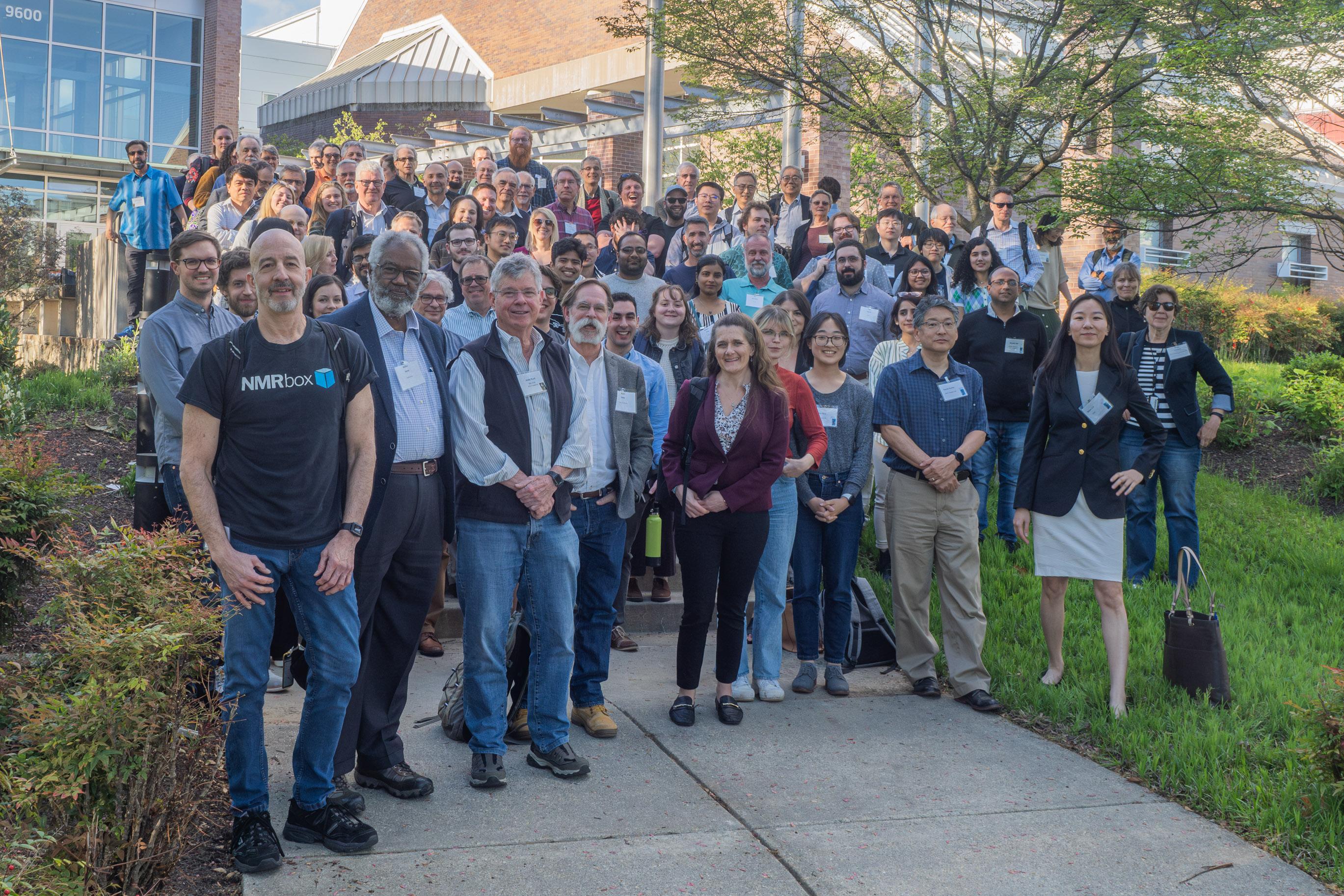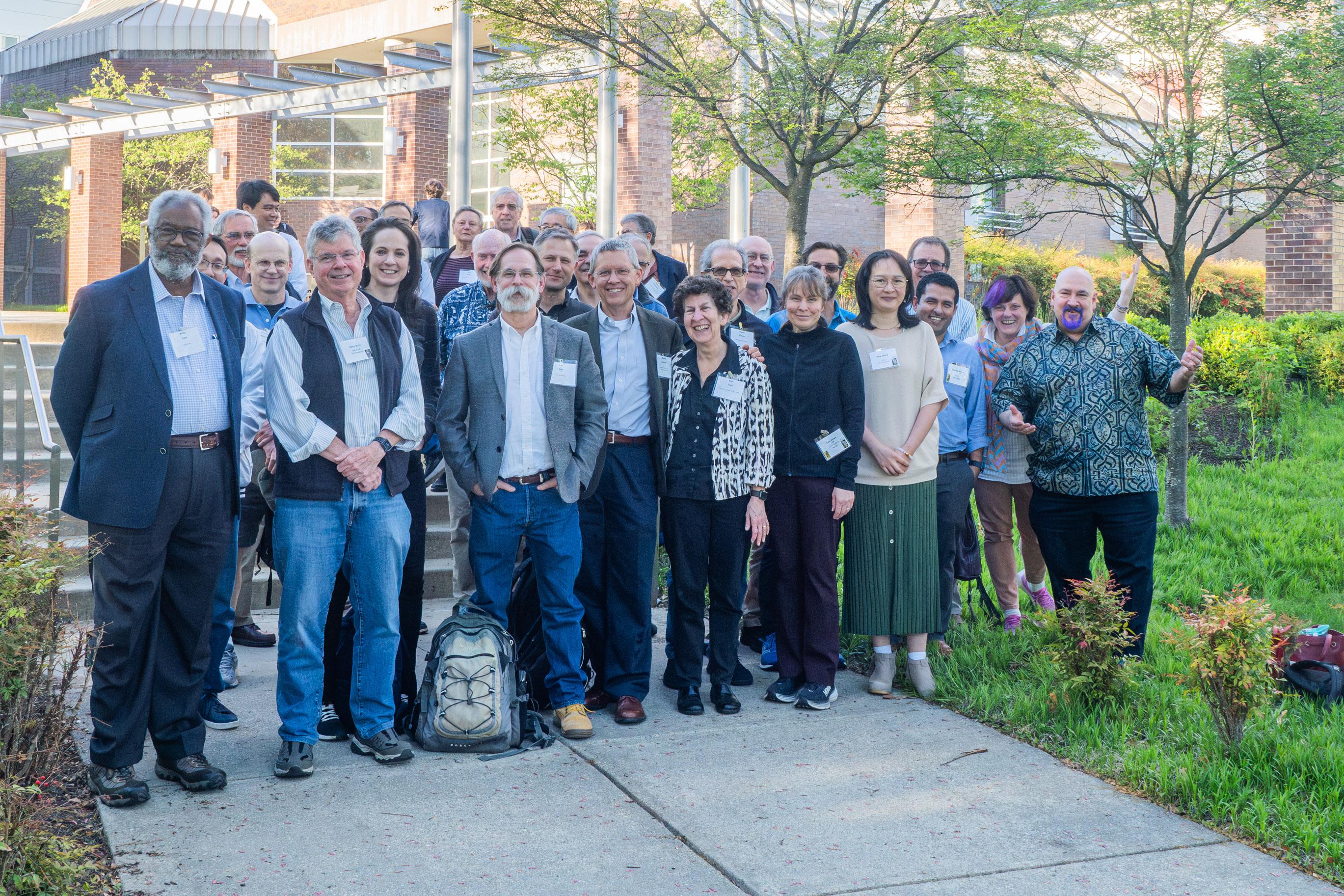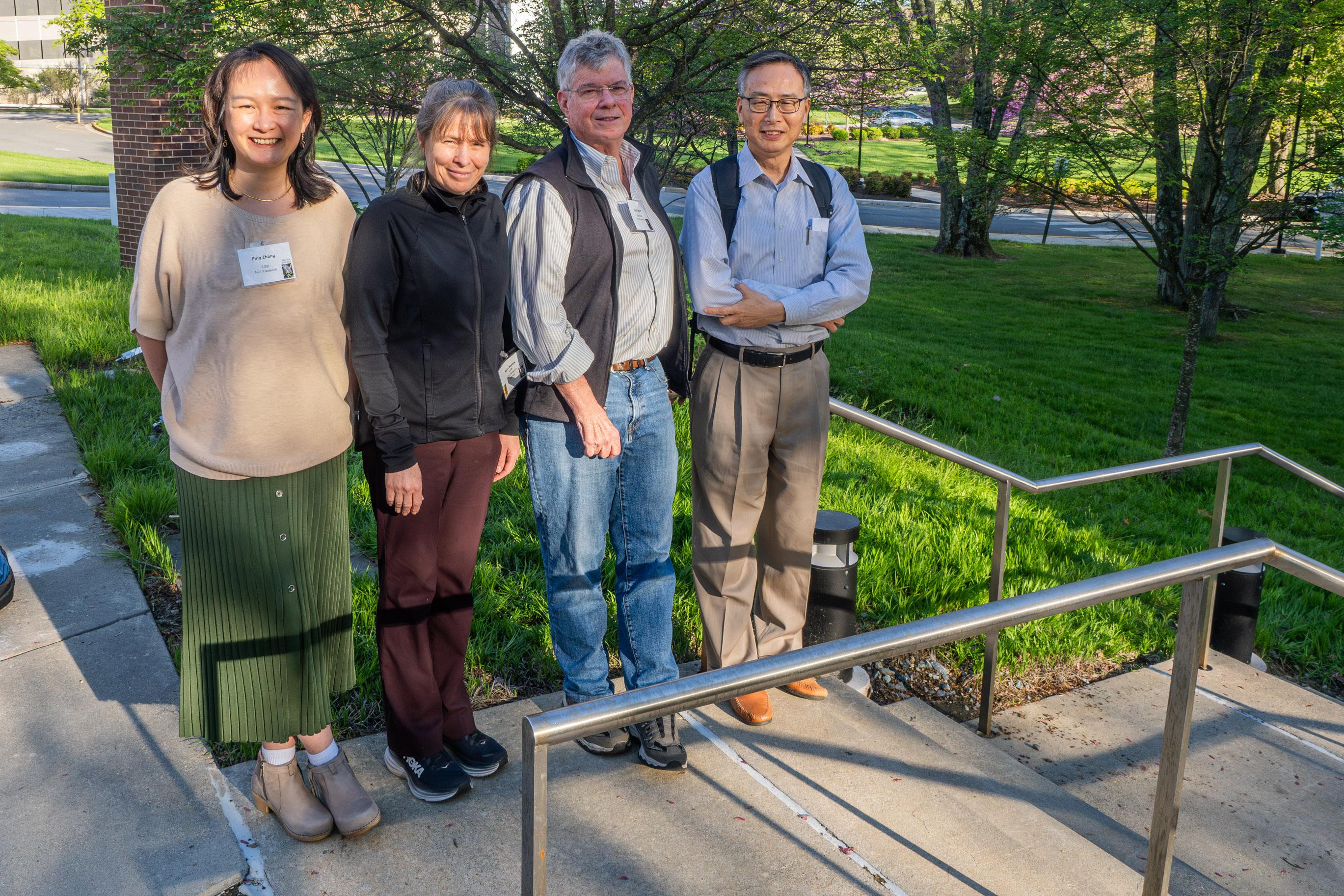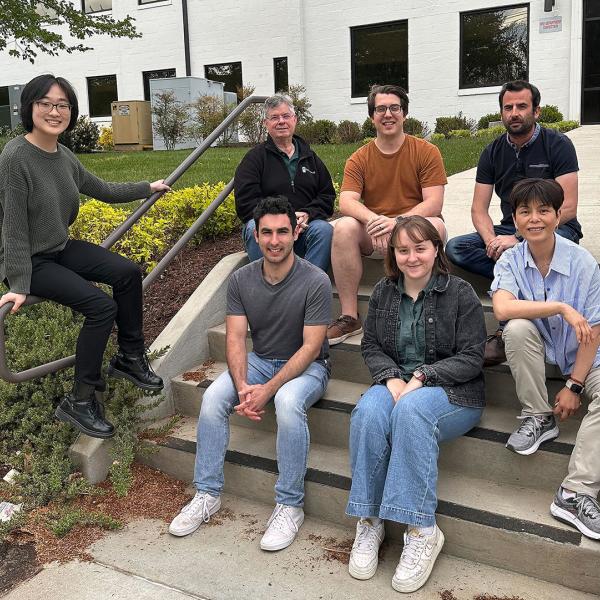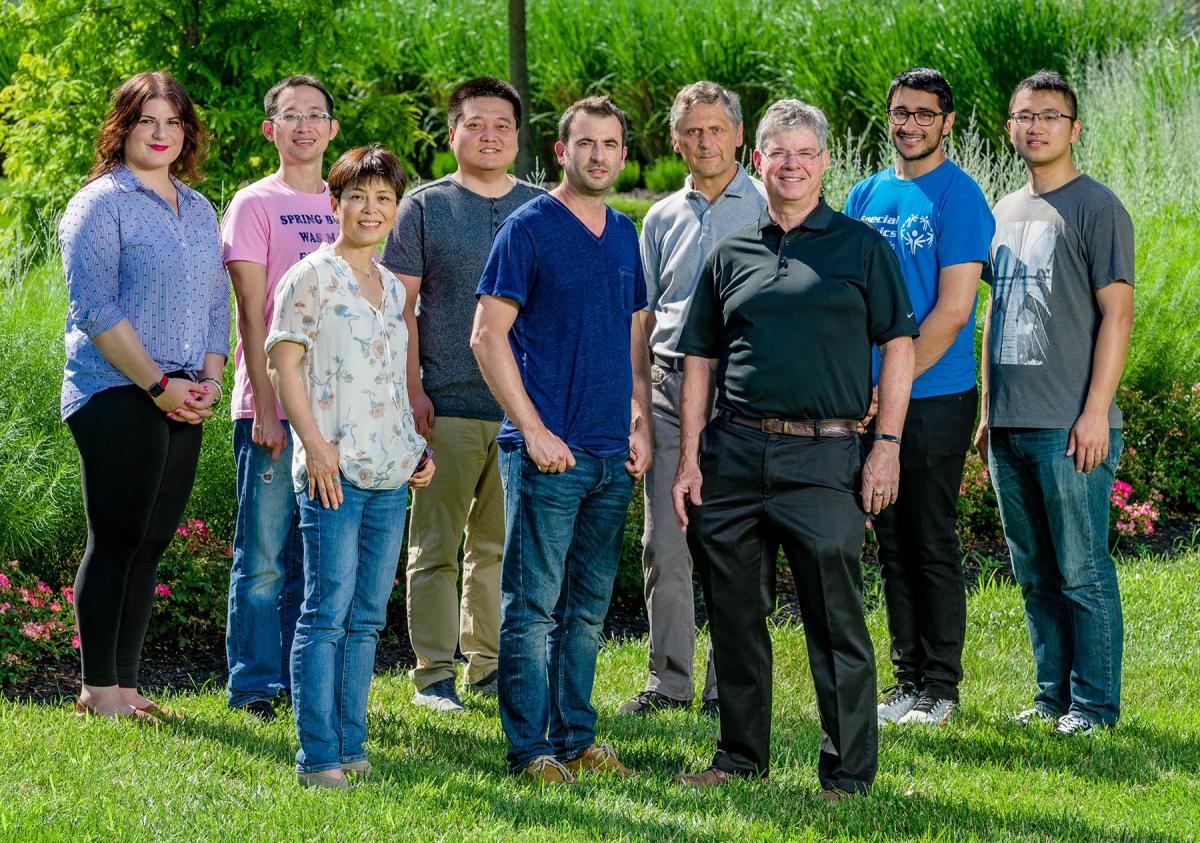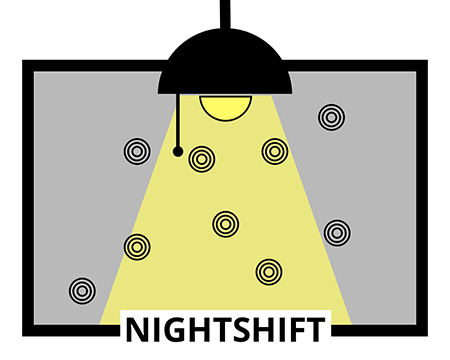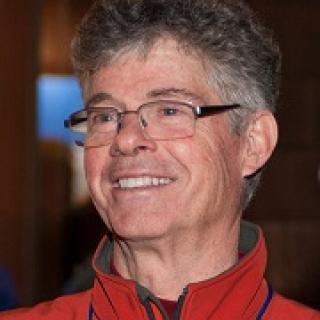
R. Andrew Byrd, Ph.D.
- Center for Cancer Research
- National Cancer Institute
RESEARCH SUMMARY
Dr. Byrd was prominent in developing NMR-based structural biology for the study of proteins, nucleic acids, polysaccharides, and protein complexes. His research focused on deciphering allosteric mechanisms in the ubiquitination pathway regulating protein degradation/homeostatis and the roles of ADP ribosylation factors and GTPase activating proteins in regulating membrane trafficking. Dr. Byrd served as Chief of the Structural Biophysics Laboratory from 1999-2017 and continued as Head of the Macromolecular NMR Section until 2024. His group contributed to the development and impact of structural biology within the CCR and conducts an active, multidisciplinary research effort utilizing biophysics and NMR spectroscopy to provide mechanistic understanding of complex biological processes.
Areas of Expertise
Research
The Macromolecular NMR Section of the Center for Structural Biology (CSB) focused on solution structural biology and biophysics aimed at understanding and regulating the mechanism of action, dynamics and complex formation of proteins and membrane surface signaling. The major structural tool was nuclear magnetic resonance (NMR) spectroscopy, and the group had a very strong interdisciplinary approach to understanding biochemical and biological mechanisms. Technologies incorporated in the research program included solution X-ray scattering, fluorescence and circular dichroism spectroscopy, mass spectrometry, calorimetry and novel binding methodologies including SPR and microscale thermophoresis. Collaborations brought together our work with neutron reflectometry and molecular dynamics simulations. Research in the Byrd laboratory focused on protein-protein interactions in the ubiquitin-proteasome regulation pathway and the area of ADP-ribosylation factor (Arf) family of GTP-binding proteins and their regulators, the Arf GTPase-activating proteins (Arf GAPs). In the Arf:ArfGAP system, we utilized nanodisc membrane mimetics to examine in situ membrane surface signaling. We sought to provide detailed structural and mechanistic insight, which we combined with collaborations in molecular and cell biology to inform and modulate biological function.
Publications
- Bibliography Link
- View Dr. Byrd's Complete Bibliography at Publons.
Optimization of Sortase A Ligation for Flexible Engineering of Complex Protein Systems
Allosteric regulation of E2:E3 interactions promote a processive ubiquitination machine
Probing broad timescale and heterogeneous conformational dynamics in the catalytic core of the Arf-GAP ASAP1 via methyl adiabatic relaxation dispersion
Biography
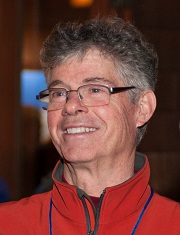
R. Andrew Byrd, Ph.D.
Dr. Byrd received his Ph.D. from the University of South Carolina, specializing in high-resolution biomolecular NMR. He was a postdoctoral fellow and subsequently a research officer in the Molecular Biophysics Laboratory of the National Research Council of Canada, where he investigated biological membranes by solid-state NMR. Following a period as a senior investigator at the Center for Drugs and Biologics/FDA, he established the Macromolecular NMR Section of the ABL-Basic Research Program at the NCI-Frederick in 1992. He chaired the Experimental NMR Conference in 1992 and co-chaired the International Conference on Magnetic Resonance in Biological Systems in 1996. Dr. Byrd served as Chief of the Structural Biophysics Laboratory in the Center for Cancer Research, NCI from 1999-2017. He has served on multiple drug discovery panels for NCI and served as the Director of the Molecular Discovery Program from 2009-2011. Dr. Byrd continues his work as a Senior Investigator in the Center for Structural Biology. He has been very active with the Protein Data Bank (PDB), serving on the Advisory Committee of the world-wide PDB 2004-2021, chair of this committee 2015-2018, and on the Advisory Committee of the RCSB PDB 2009-2021.
Dr. Byrd retired in July 2024 and is now an NIH Scientist Emeritus.
News
Andy Byrd to retire from NCI July 2024: https://www.ibbr.umd.edu/groups/andy-byrd-retirement-symposium
ByrdFest Symposium April 18-19, 2024 at IBBR
Multi-group collaboration:
Zhang, Y. et al. Myr-Arf1 conformational flexibility at the membrane surface sheds light on the interactions with ArfGAP ASAP1. Nat. Comm. 2023
Interesting methods publication:
Koscielniak J, Li J, Sail D, Swenson R, Anklin C, Rozovsky S, Byrd RA. Exploring Sulfur Sites in Proteins via Triple-Resonance (1)H-Detected (77)Se NMR. JACS 2023.
Collaboration with Randazzo group published in JBC => Rosenberg et al. JBC 2023
Byrd Group: 2023
Jess Li publishes protocol for deuteration of proteins in JBC that has been widely used by the group and many colleagues; JBC, 2022.
New Postbacs joining the group: Rebekah Jackson (Indiana Univ-Purdue Univ), Ethan Dionne (Providence College) and Kailian Guo (UCLA)
Changing of the guard - Two postbacs are moving on this summer: Kristen Snitchler will be entering a PhD program at the Univ. Oregon & Brianna Papoutsis will be entering Med School at Penn State Univ.
Recent publications from the group: Collaboration with Xinhua Ji and Allan Weissman in Plos Biology 2021; collaboration with Chao et al in the RAS initiative, JACS 2022; collaboration with Sharon Rozovsky on 77Se NMR, J, Biomol NMR 2022.
Byrd Group 2018
Yue Zhang headed to RING Therapeutics, congratulations!
Ian Fucci publishes python software tool for both NMR scientists and biochemists to permit facile review/examination of NMR data from BMRB: nightshift. Will appear in Special Issue of Protein Science: Protein Tools, available online now.
Yue Zhang wins NIH FARE award for his research on Arf1 and ASAP1 ArfGAP system, supporting travel to a conference of his choice in 2022.
Domarin Khago GETS A JOB!!! Congratulations to Domarin as she moves to Eat Just, a plant-based food alternatives biotech company in the San Francisco Area.
Olivier Soubias leads multidisciplinary publication in Science Advances (2020) on the ASAP1 PH domain surface recognition and Arf1 interactions.
Frank Chao extends the dynamics methods development with publications in J. Biomolecular NMR (2020) and J. Magnetic Resonance (2021).
Frank Chao moves on in 2020 – joins the NCI LEIDOS Ras Initiative as a Scientist. Congratulations Frank!
Domarin Khago and Ian Fucci publish a review on conformational dynamics in the recognition and regulation of the ubiquitination proteasomal degradation system, Molecules (2020).
Jess Li publishes paper on protein engineering and segmental labeling using variants of Srt A J. Biol. Chem.295(9):2664-2675 (2020).
The Arf1:ASAP1 project (collaboration with the Randazzo lab) utilizing nanodisc methodology advances with recent publications: Li et al., Biochemistry 58(10):1432-1439 (2019) and Roy et al. J. Biol. Chem., 294(46):17534-17370 (2019)
Group represented with two posters (Domarin Khago and Andy Byrd) at the joint Euromar/ISMAR conference in Berlin, Germany, August 2019
Adiabatic relaxation dispersion methodology and applications developed and extended to methyl reporters in recent papers led by Fa-An Chao: J. Magn. Res. 277:8-14 (2017); Emerging Topics in Life Sciences. 2:93-105 (2018); JACS 141(30):11881-11891 (2019); J. Biomol. NMR, in press (2020).
Frank Chao gives promoted lecture on geometric approximation and HARD (Heteronuclear Adiabatic Relaxation Disperson) at Computational Aspects of Biomolecular NMR – Gordon Research Conference, Les Diablerets, Switzerland, June 2019.
Group represented with two posters (Chao: geoHARD and Zhang: ASAP1 PH domain and Nanodiscs) at 60th Experimental NMR Conference, Asilomar, CA, April, 2019
Dr. Byrd awarded August-Wilhelm Schneer Gastprofessor (second term) by the Technical Universität München, spends August-November 2018 at TUM, host Prof. Franz Hagn. Invited lectures at the Murnau Conference on Structural Biology, Murnau, Germany, Department of Biochemistry, Cambridge Univ., Cambridge, UK, and Dept. of Molecular Biology and Biochemistry, Medical Univ. of Graz, Austria.
Group represented with poster (Chakrabarti et al.) at XXVIII ICMRBS, Dublin, Ireland, August 2018.
Dr. Byrd gives invited lecture on “NMR Dynamics and Allostery in the Ubquitin Pathway” at the IBBR-NMR Day for local Washington area NMR groups, May 2018
Group represented with poster (Jess Li and Domarin Khago) at the Keystone Conference on Ubiquitin Signaling, January 2018.
Olivier Soubias joins the group as a Staff Scientist. Olivier brings expertise in membranes, lipids, and solid-state NMR that will contribute to all the projects, especially the nano disc work.
Group represented at XXVIIth ICMRBS, Kyoto, Japan: two posters and lecture by R.A. Byrd.
Fa-An Chao’s geoHARD paper published in J. Am.Chem. Soc. 2016: “Geometric approximation: a new computational approach to characterize protein dynamics from NMR adiabatic relaxation dispersion experiments”. JACS 138(23):7337-7345 (2016).
Group represented at 57th ENC, Pittsburgh: three posters and lecture by R.A. Byrd.
Dr. Byrd interviewed regarding research and NMR technology: Inhibiting Cancer Cells Using NMR (Bruker Corp.)
Collaborative work on ASAP1 PH domain with groups of Di Xia and Paul Randazzo group published: Structure 23(11):1977-88 (2015).
Dr. Byrd awarded August-Wilhelm Schneer Gastprofessor by Technical Universität München, spends January – March 2016 at TUM, host Profs. Michael Sattler and Franz Hagn.
New approach for analyzing dynamics in Intrinsically Disordered Proteins (IDPs) published by Michelle Gill in collaboration with Art Palmer, Columbia University: Phys. Chem. Chem. Phys. 18(8):5839-49 (2016).
Dr. Byrd serving as Chair, wwPDB Advisory Committee (2015-2017).
Group publishes new Non-Uniform Sampling software NESTA-NMR for reconstruction of NUS NMR data, work of Shangjin Sun and Michelle Gill: J. Biomol. NMR 62(1):105-17 (2015).
